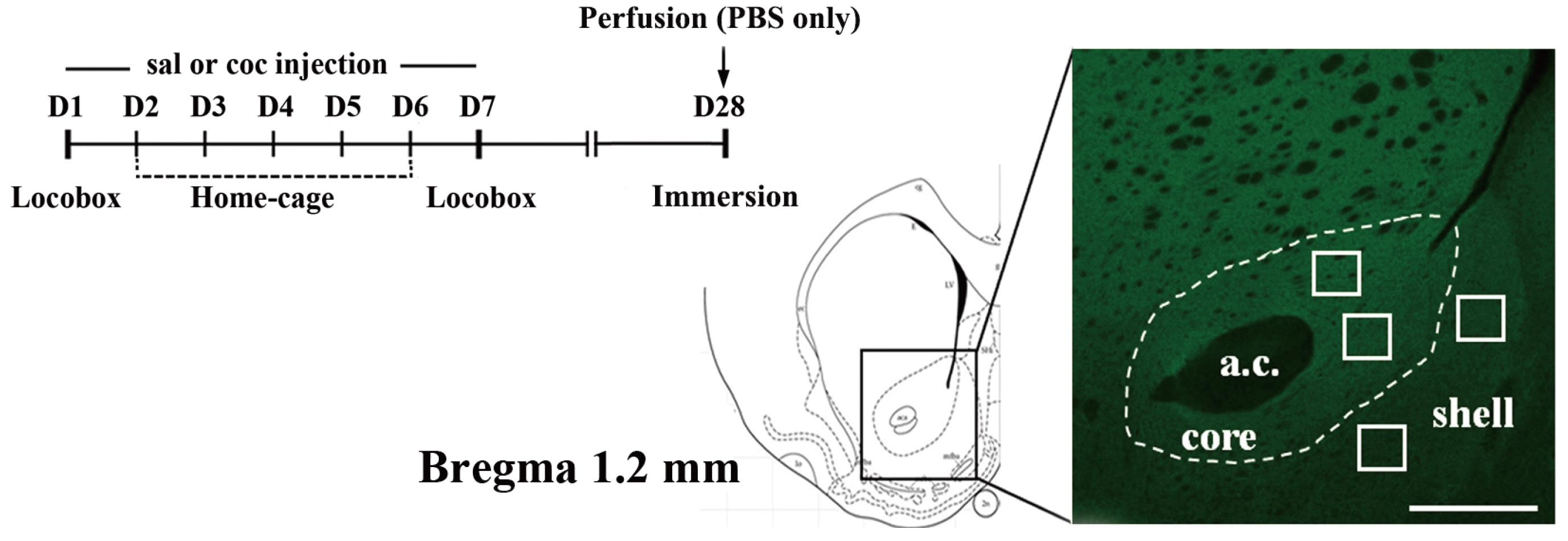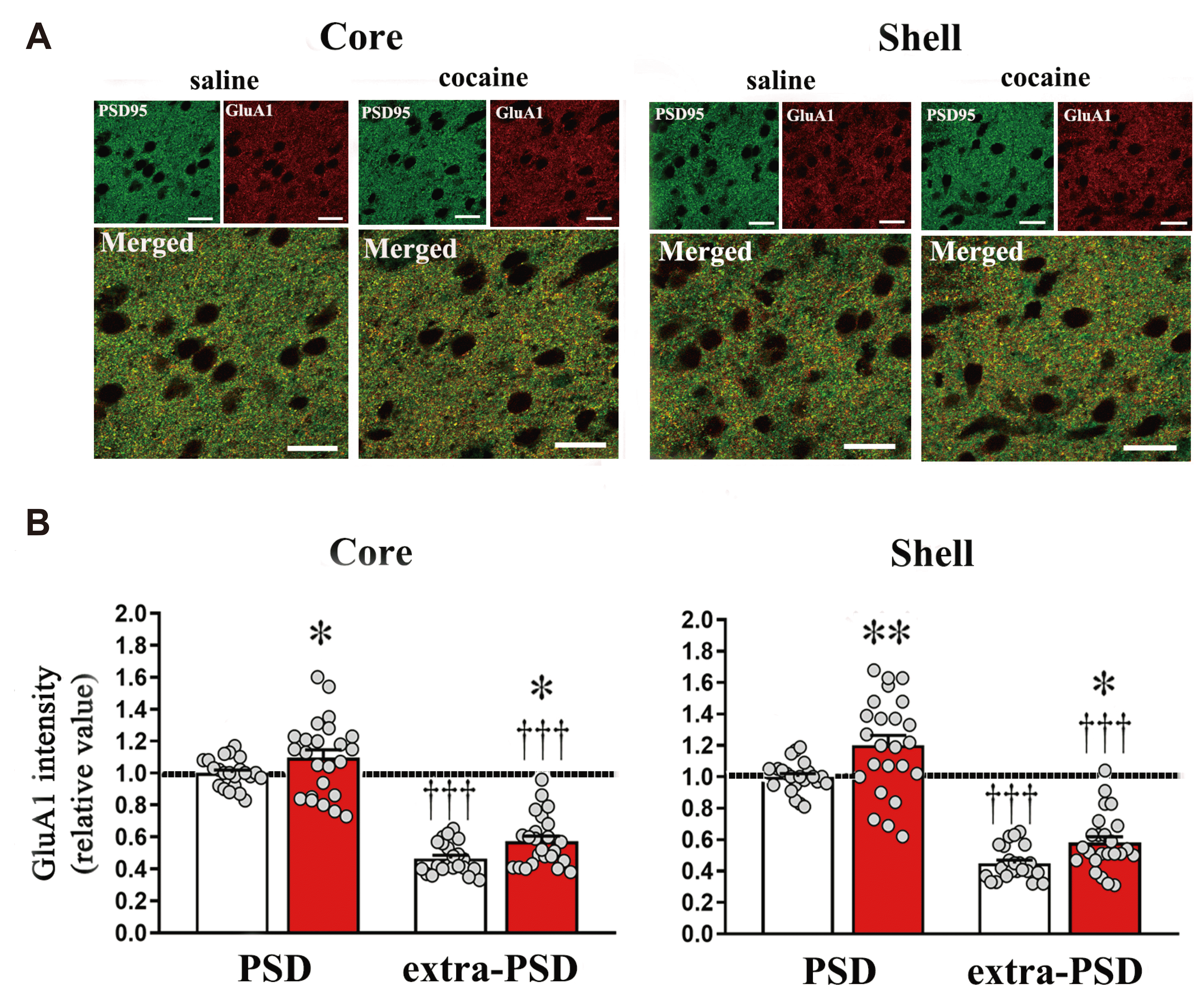INTRODUCTION
METHODS
Subjects and drugs
Locomotor activity
Immersion-fixation
Immunohistochemistry
Image analysis for quantification of GluA1 intensity
Design and procedures
Statistical analyses
RESULTS
Differential GluA1 expression in the NAcc after cocaine exposure is detectable by immersion-fixation immunohistochemistry
 | Fig. 1Experiment outline.An experimental timeline indicating the cocaine sensitization scheme and the point at which immersion-fixation was performed. A schematic diagram of a matched coronal brain section (left) is adapted from the brain atlas of Paxinos and Watson [24], and a representative fluorescent image of the NAcc shows some of the sampled regions (white square boxes) selected for GluA1 analysis (right). Only one or two sample regions from both core and shell, respectively, were obtained from each slice of brain sections. The scale bar is 500 µm.
|
 | Fig. 2Locomotor activity counts during exposure.All rats were habituated to the locomotor activity chamber for 1 h and their locomotor activity measured for an additional 1 h following their respective injections. Locomotor activity was measured only at day 1 and 7 as remaining injections were administered in the home cage (once daily, a total of 7 injections). Data are expressed as mean + standard error of the mean. **p < 0.01, significant differences compared to saline exposed animals. †††p < 0.001, significant difference at day 7 compared to day 1 in cocaine exposed group as revealed by post-hoc Bonferroni comparisons following two-way repeated ANOVA.
|
 | Fig. 3Differential GluA1 expression in the NAcc after cocaine exposure is detectable using immersion-fixation immunohistochemistry.(A) Representative images showing co-localization of GluA1 and PSD95 in the NAcc core and shell, obtained with 1-h immersion-fixation on withdrawal day 21 after repeated exposure to saline or cocaine. Green and red indicates PSD95 and GluA1 expression, respectively, while yellow indicates co-localization of the two proteins. The scale bar is 20 µm. (B) Analysis of GluA1 intensity in the NAcc core and shell obtained with 1-h immersion-fixation on withdrawal day 21 after repeated exposure to saline or cocaine. Data are expressed as mean + standard error of the mean. relative to GluA1 intensity in the PSD area of the saline-exposed group. Symbols indicate significant differences as revealed by post-hoc Bonferroni comparisons following two-way ANOVA analysis. *p < 0.05, **p < 0.01; significantly different compared to saline pre-exposed group within each area (PSD or extra-PSD). †††p < 0.001; significantly different compared to PSD area. The total numbers of slices used in the analysis for the NAcc core and shell from 4 animals are 22 and 24 for saline- and cocaine-exposed rats, respectively. The sample numbers for PSD and extra-PSD are the same in all cases.
|




 PDF
PDF Citation
Citation Print
Print


 XML Download
XML Download